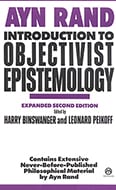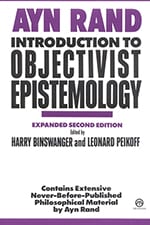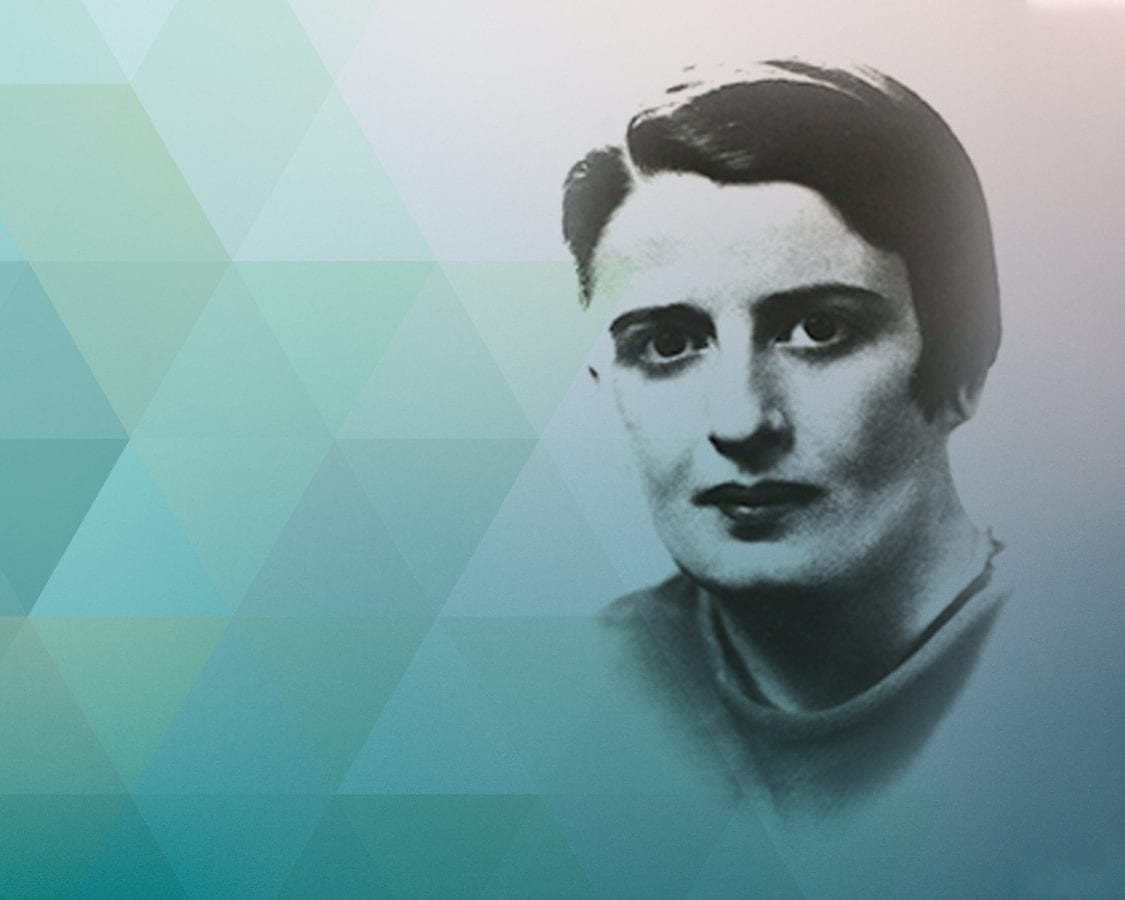“Cognition and Measurement,” which is chapter 1 of Introduction to Objectivist Epistemology, was first published in the July 1966 issue of The Objectivist, then in a booklet containing the entire work (1967), then in a mass market paperback (1979) and most recently in an expanded second edition (1990).
Consciousness, as a state of awareness, is not a passive state, but an active process that consists of two essentials: differentiation and integration.
Although, chronologically, man’s consciousness develops in three stages: the stage of sensations, the perceptual, the conceptual — epistemologically, the base of all of man’s knowledge is the perceptual stage.
Sensations, as such, are not retained in man’s memory, nor is man able to experience a pure isolated sensation. As far as can be ascertained, an infant’s sensory experience is an undifferentiated chaos. Discriminated awareness begins on the level of percepts.
A percept is a group of sensations automatically retained and integrated by the brain of a living organism. It is in the form of percepts that man grasps the evidence of his senses and apprehends reality. When we speak of “direct perception” or “direct awareness,” we mean the perceptual level. Percepts, not sensations, are the given, the self-evident. The knowledge of sensations as components of percepts is not direct, it is acquired by man much later: it is a scientific, conceptual discovery.
The building-block of man’s knowledge is the concept of an “existent” — of something that exists, be it a thing, an attribute or an action. Since it is a concept, man cannot grasp it explicitly until he has reached the conceptual stage. But it is implicit in every percept (to perceive a thing is to perceive that it exists) and man grasps it implicitly on the perceptual level — i.e., he grasps the constituents of the concept “existent,” the data which are later to be integrated by that concept. It is this implicit knowledge that permits his consciousness to develop further.
(It may be supposed that the concept “existent” is implicit even on the level of sensations — if and to the extent that a consciousness is able to discriminate on that level. A sensation is a sensation of something, as distinguished from the nothing of the preceding and succeeding moments. A sensation does not tell man what exists, but only that it exists.)
The (implicit) concept “existent” undergoes three stages of development in man’s mind. The first stage is a child’s awareness of objects, of things — which represents the (implicit) concept “entity.” The second and closely allied stage is the awareness of specific, particular things which he can recognize and distinguish from the rest of his perceptual field — which represents the (implicit) concept “identity.”
The third stage consists of grasping relationships among these entities by grasping the similarities and differences of their identities. This requires the transformation of the (implicit) concept “entity” into the (implicit) concept “unit.”
When a child observes that two objects (which he will later learn to designate as “tables”) resemble each other, but are different from four other objects (“chairs”), his mind is focusing on a particular attribute of the objects (their shape), then isolating them according to their differences, and integrating them as units into separate groups according to their similarities.
A unit is an existent regarded as a separate member of a group of two or more similar members. (Two stones are two units; so are two square feet of ground, if regarded as distinct parts of a continuous stretch of ground.) Note that the concept “unit” involves an act of consciousness (a selective focus, a certain way of regarding things), but that it is not an arbitrary creation of consciousness: it is a method of identification or classification according to the attributes which a consciousness observes in reality. This method permits any number of classifications and cross-classifications: one may classify things according to their shape or color or weight or size or atomic structure; but the criterion of classification is not invented, it is perceived in reality. Thus the concept “unit” is a bridge between metaphysics and epistemology: units do not exist qua units, what exists are things, but units are things viewed by a consciousness in certain existing relationships.
With the grasp of the (implicit) concept “unit” man reaches the conceptual level of cognition, which consists of two interrelated fields: Conceptual and the Mathematical. The process of concept-formation is, in large part, a mathematical process.
Mathematics is the science of measurement. Before proceeding to the subject of concept-formation, let us first consider the subject of measurement.
Measurement is the identification of a relationship — a quantitative relationship established by means of a standard that serves as a unit. Entities (and their actions) are measured by their attributes (length, weight, velocity, etc.) and the standard of measurement is a concretely specified unit representing the appropriate attribute. Thus, one measures length in inches, feet and miles — weight in pounds — velocity by means of a given distance traversed in a given time, etc.
It is important to note that while the choice of a given standard is optional, the mathematical rules of using it are not. It makes no difference whether one measures length in terms of feet or meters; the standard provides only the form of notation, not the substance nor the result of the process of measuring. The facts established by measurement will be the same, regardless of the particular standard used; the standard can neither alter nor affect them. The requirements of a standard of measurement are: that it represent the appropriate attribute, that it be easily perceivable by man and that, once chosen, it remain immutable and absolute whenever used. (Please remember this; we will have reason to recall it.)
The process of measurement is a process of integrating an unlimited scale of knowledge to man’s limited perceptual experience — a process of making the universe knowable by bringing it within the range of man’s consciousness, by establishing its relationship to man. It is not an accident that man’s earliest attempts at measurement (the evidence of which survives to this day) consisted of relating things to himself — as, for instance, taking the length of his foot as a standard of length, or adopting the decimal system, which is supposed to have its origin in man’s ten fingers as units of counting.
It is here that Protagoras’ old dictum may be given a new meaning, the opposite of the one he intended: “Man is the measure of all things.” Man is the measure, epistemologically — not metaphysically. In regard to human knowledge, man has to be the measure, since he has to bring all things into the realm of the humanly knowable. But, far from leading to subjectivism, the methods which he has to employ require the most rigorous mathematical precision, the most rigorous compliance with objective rules and facts — if the end product is to be knowledge.
This is true of mathematical principles and of the principles by which man forms his concepts. Man’s mathematical and conceptual abilities develop simultaneously. A child learns to count when he is learning his first words. And in order to proceed beyond the stage of counting his ten fingers, it is the conceptual level of his consciousness that man has to expand.






